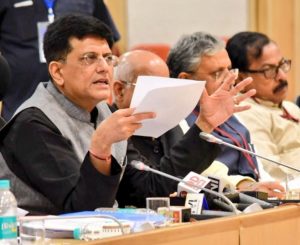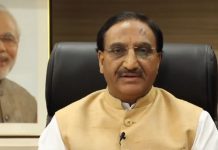 With the opposition having upped its ante against Modi, the latter is hard-pressed to dish out vote-luring offers in the interim budget this time before the Lok Sabha elections are announced. Amongst widespread speculation there is a strong possibility of the income tax threshold limit to be raised to benefit the middle class and salaried population to say Rs 3 lakh per annum even as a larger expenditure on account of 10 per cent reservation for the upper class is poised to lead to larger gap in the fiscal consolidation. Rest assured that it is an interim budget and not a vote- on- account — meaning the government will present a both revenue and expenditure side of the budget, the full budget would be presented by the new government after discussion in the Parliament later.
With the opposition having upped its ante against Modi, the latter is hard-pressed to dish out vote-luring offers in the interim budget this time before the Lok Sabha elections are announced. Amongst widespread speculation there is a strong possibility of the income tax threshold limit to be raised to benefit the middle class and salaried population to say Rs 3 lakh per annum even as a larger expenditure on account of 10 per cent reservation for the upper class is poised to lead to larger gap in the fiscal consolidation. Rest assured that it is an interim budget and not a vote- on- account — meaning the government will present a both revenue and expenditure side of the budget, the full budget would be presented by the new government after discussion in the Parliament later. Even as the interim FM Piyush Goyal readies his presentation of the interim budget papers, his proposals are largely meant to give a sense of direction to the governments projects for next 4-5 months. The immediate concern will be the exorbitant rise in the fiscal consolidation front as the fiscal deficit for April-November had shot up to 115 per cent of the annual targetted level. Last year – for 2017-18 the fiscal deficit stood at 3.5 per cent even as it was stipulated to be at 3.3 per cent. This year again the fiscal deficit is expected to be no less than 3.3 per cent. Amongst the spoilsport has been the GST collections with reclassification of many services and reduction in the tax slab which has pulled down revenues. In its 31st meeting on December 22, the GST council decided to cut tax rates on 23 commonly used items leading to a tax loss of almost Rs 5500 crore. In addition to this, the slipppages in disinvestment proceeds, the slippages due to MUDRA loans as well as revised MSP outgo and larger outgo due to rupee weakening and crude oil price hike is likely to push up the fiscal computations. Manufacturing growth has touched a 17 month low of 0.5 per cent in November on account of low capital goods and consumer goods production. The credit off take has also not taken shape despite the RBI keeping a status quo on key interest rates. All these are likely to push down the real GDP growth rate to an estimated 7.2 per cent for 2018-19.
While Ram Janam bhoomi issue takes a back seat, the mahagathbandhan continues to cock a snook at Modi with the issue of farmers as well as employment generation which will become center stage. Amongst a host of freebies that is likely to be extended there is a strong possibility of a higher pecuniary benefit through the DBT scheme for farmers in lieu of a loan waiver — which Modi has largely discounted as not a solution to the Indian farmer’s woes. In the farm sector, the problem of plenty is poised to come center stage with overstocked storage depots and containers the issue of remunerative prices for farm products will continue to dog the farmer and Modi.













